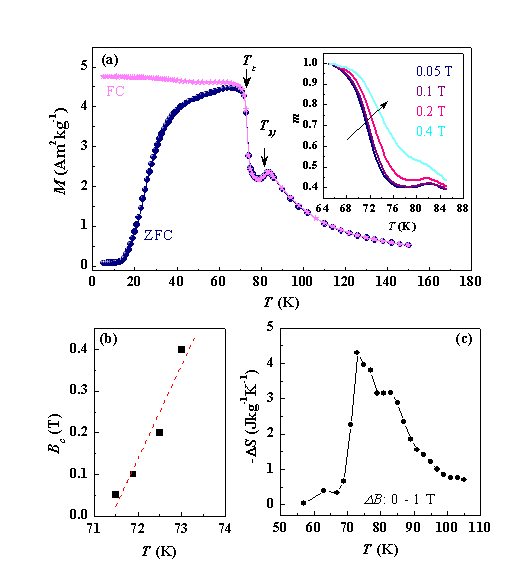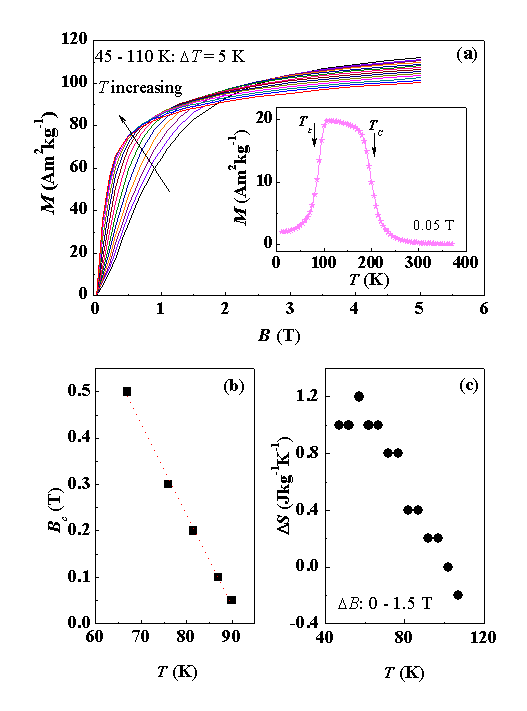
Normal or inverse magnetocaloric effects at the transition between antiferromagnetism and ferromagnetism |
|
The magnetocaloric effect (MCE) at the antiferromagnetic to ferromagnetic phase transition in Mn1.05Ni0.85Ge and CrO1.86F0.14, and the MCE at the ferromagnetic-antiferromagnetic transition in Tb3Co have been investigated. Mn1.05Ni0.85Ge and CrO1.86F0.14 are found to exhibit the inverse MCE whereas the MCE of Tb3Co is normal. For these compounds, the dependence of the transition temperature on the applied magnetic field B has been studied. A thermodynamical analysis is presented of the sign of the magnetic-entropy change in these three compounds which are representatives of two different types of B-T diagrams. Other possible B-T diagrams are discussed and the analysis is extended to antiferromagnetic-ferromagnetic and ferromagnetic-antiferromagnetic phase transitions reported in literature.
(a) Temperature dependencies of the ZFC and FC magnetization of Tb3Co in a magnetic field of 0.05 T, with Tt indicating the transition temperature from AF to F. The inset displays the temperature dependence of the ZFC reduced magnetization at different magnetic fields. (b) Temperature dependence of the critical magnetic field of the AF to F transition. (c) Magnetic-entropy change at magnetic-field changes from 0 to 1 T.
(a) Magnetic isotherms of CrO1.86F0.14, measured from 45 to 110 K with temperature steps of 5 K. (b) Temperature dependence of the critical magnetic field of the AF to FM transition, (c) Magnetic-entropy change at magnetic-field changes from 0 to 1.5 T.
|
|

